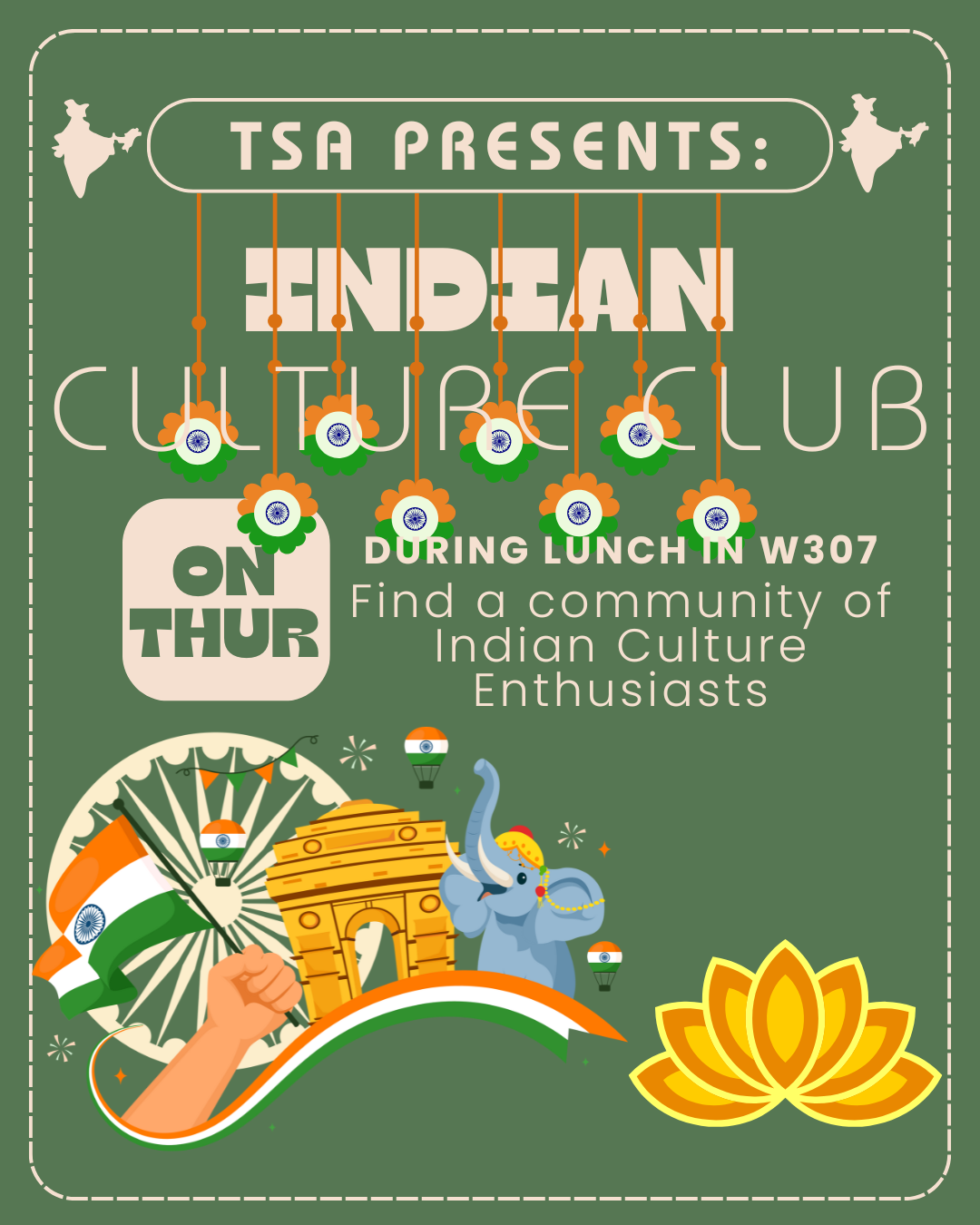Indian Culture Club
by Benjamin Cohen
The Indian Culture Club is about to launch its second year at the Science Academy. Last year they brought us the wonderful Diwali Festival, so what do they have in store for this year? I interviewed the co-founder and co-president of the club, Shivansh Pandey, to learn more about the origins of the club and its plans for the future.
Can you tell us a little about the history and mission of the club?
So, early September of 2024, I asked Ms. Huyler if she would be interested in being advisor for an Indian Culture Club. I wanted to create this club as I felt that in the last four years, a large number of Indian kids had come to The Science Academy, but there was no proper community in which we could celebrate our culture, and no way for non-Indian people to learn about our culture. Ms. Huyler told me another freshman named Sahithi also had the same passion to create an accessible community, so we both decided to work together as this was something that had the potential to become a great club. We opened sign-ups during Club Rush last year and in the span of only 30 minutes, over 40 people signed our interest form. We were very excited to see such a positive feedback from the community
What kind of activities or events does the club organize throughout the year? How do you think participating in the club enriches students' understanding of Indian culture?
Throughout the year, we plan cultural showcases, holiday celebrations like Diwali and Holi, and smaller meetings where we highlight Indian culture, tradition, and sometimes even food. We also have mini planning days, like prepping for Diwali. For non-Indian members, this gives them a way to really experience the culture instead of just hearing about it, and for Indian students, it feels like a space where they can celebrate their traditions with pride.
What is one of the most popular traditions or celebrations the club hosts, and how do students get involved?
One of our most popular events is the Diwali celebration. We decorate the quad with signs and everyone dresses up. We even give out temporary tattoo designs, inspired by henna decorations, and have traditional sweets. Students get involved by either dancing together, helping with decorations, or just showing up to try out the tattoo and learn about the meaning of the festival. It’s very hands-on and fun.
Can you tell us more about Diwali and the traditions surrounding it?
Diwali is also known as the “festival of lights" and it is the biggest holiday in India. It symbolizes the victory of light over darkness, good over evil, and knowledge over ignorance. Basically we have a famous story in India called the Ramayana, one of the oldest epics in the world. This holiday celebrates the return of the hero, Rama, to the kingdom of Ayodhya to take his place as the rightful king, after defeating the tyrant king of Lanka, Ravaan and returning from a 14-year-long exile he did not deserve. It is also the beginning of the year for India and symbolizes prosperity. Indians around the world decorate their home with candles and have feasts followed by firecrackers, celebrating our culture, tradition, and family.
How has the club impacted the school community in terms of diversity and inclusion?
In just a short time, the club has brought together students from many backgrounds. Even people who don’t know much about Indian culture join to learn and celebrate. I think it shows that our school values diversity, and it creates a sense of belonging for Indian students who might not have had a place to share their traditions before.
Are there any specific cultural aspects, such as food, music, or dance, that the club focuses on?
We try to touch on all the big ones: tradition, culture, and outreach. These are fun ways for people to easily connect with us. For example, sampling different Indian dishes or learning a dance routine from a Bollywood song helps to break down barriers and makes people curious to know more about our history, language, and traditions.
How do you balance showcasing traditional culture while also making it accessible and interesting to students from diverse backgrounds?
We make sure our events appeal to everyone. For example, while we explain the traditions in detail and highlight their cultural significance, we try to answer as many questions as possible. One cool thing we did was that at last year's Diwali party, we brought more than 20 or so “kurtas”, which are traditional Indian clothes, and gave them for people to wear. This created one of my favorite memories of The Science Academy, in which people who have ancestors and connections from all over the world came together to celebrate one festival as a whole.
What are some of the challenges the club faces, and how do you overcome them?
One of the challenges is figuring out logistics, like getting supplies for festivals. Since we’re a new club, we also had to build awareness and show people we’re organized. We’ve overcome this by dividing responsibilities within the leadership team and collaborating with teachers and other cultural clubs, such as AAPI. Every challenge has actually been a chance for us to become stronger as a team.




